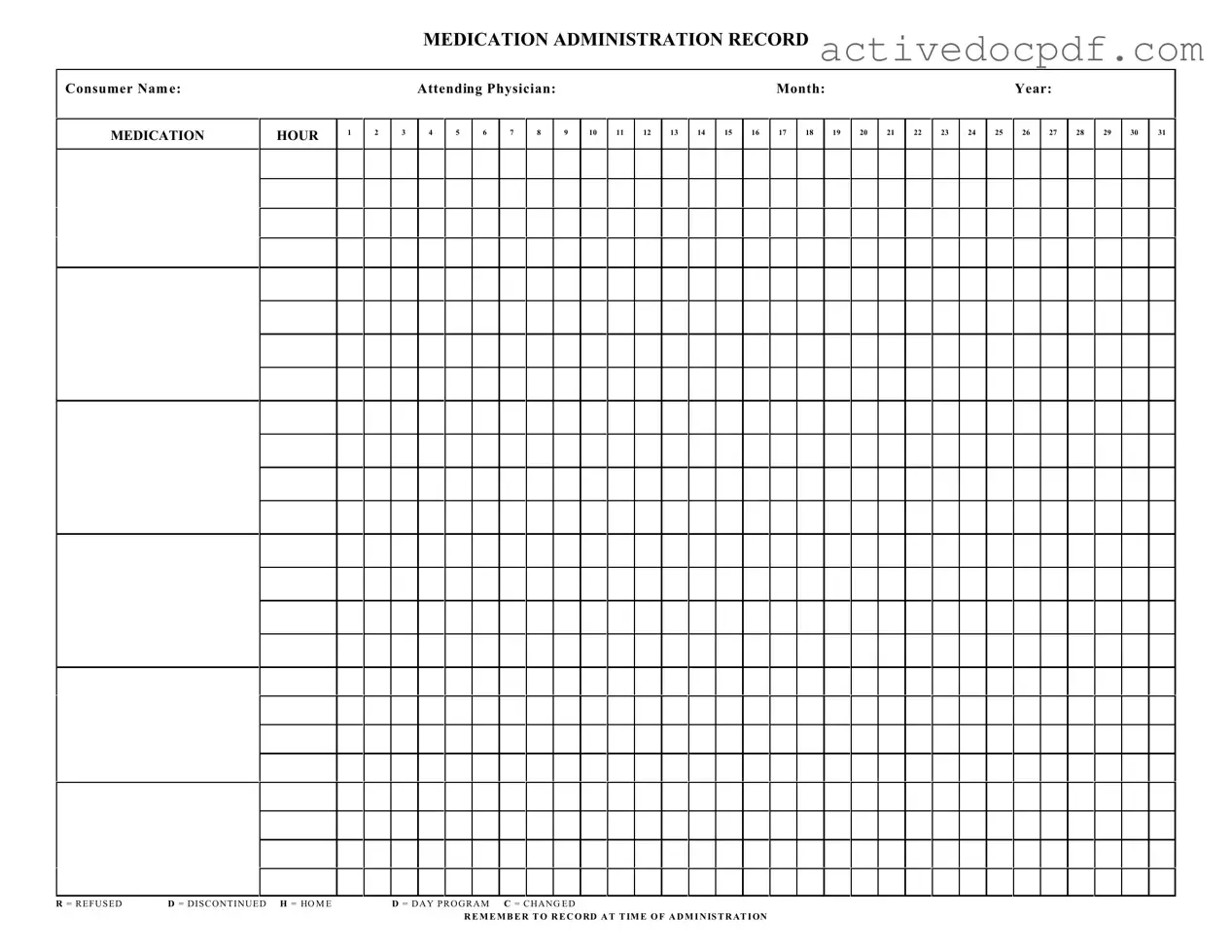What is the purpose of the Medication Administration Record Sheet?
The Medication Administration Record Sheet (MARS) is designed to track the administration of medications to consumers. It helps ensure that individuals receive their prescribed medications at the right times and in the correct dosages. This form serves as a vital communication tool among healthcare providers, caregivers, and family members.
Who should use the Medication Administration Record Sheet?
This form is primarily used by healthcare providers, including nurses, caregivers, and other staff responsible for administering medications. Additionally, family members who are involved in the care of an individual may find it useful to monitor medication adherence.
How is the Medication Administration Record Sheet structured?
The MARS is organized by consumer name and includes sections for the attending physician, month, and year. It features a grid with hours listed across the top and space for medication entries. Symbols such as R (Refused), D (Discontinued), H (Home), D (Day Program), and C (Changed) are included to indicate the status of medication administration.
It is important to record the following information on the MARS:
-
The name of the consumer receiving the medication.
-
The name of the attending physician.
-
The specific month and year.
-
The time of administration for each medication.
-
Any refusals, changes, or discontinuations of medication.
How should medications be documented on the MARS?
Medications should be documented by entering the medication name and dosage in the appropriate time slot. It's crucial to check off the corresponding box to indicate whether the medication was administered, refused, or discontinued. Accurate and timely documentation is essential for maintaining a complete medication history.
What should be done if a medication is refused?
If a consumer refuses medication, it must be noted on the MARS by marking the corresponding hour with an "R" for Refused. This documentation helps healthcare providers understand the consumer's adherence to their medication regimen and can inform future treatment decisions.
Can the Medication Administration Record Sheet be modified?
While the basic structure of the MARS should remain intact for consistency, additional notes or comments can be added as necessary. Any changes to the medication regimen should be documented clearly, using the "C" for Changed symbol where applicable.
How often should the Medication Administration Record Sheet be updated?
The MARS should be updated each time a medication is administered. This includes recording refusals or changes. Regular updates ensure that all parties involved in the consumer's care have access to the most current information regarding medication administration.
